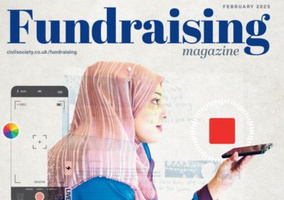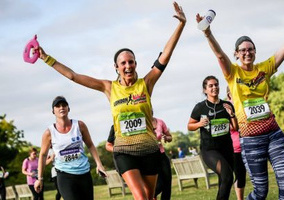For decades, fundraising appeals for international aid were fronted by high-profile people – newsreaders, charity ambassadors, celebrities – going to areas of poverty, starvation, oppression and natural disasters to shine a light on the plight of those living there. It transported the horrors of distant lands into our homes and for a night, or even a week, it gave prominence to the stories of those suffering. It was also behind some of the most successful fundraising campaigns of all time. But then the cameras left. Was it patronising? Was it white savourism? Was it worth it? Were lives saved? Did it do good?
What it certainly was, was of its time. Through a post-millennial lens, it feels blunt, belittling, superior. It can’t be denied that those appeals raised a lot of money. But did they empower? Did they have sustainable impact? Did they instil lasting equity?
I am asking so many partly rhetorically questions because I genuinely don’t know how I feel about the early days of campaigns such as Band Aid, Comic Relief et al. Like for many “of a certain age”, they were a major part of my childhood and formative years, arguably lighting a lifelong desire to protest, to make change and to donate. But I am uncomfortable with aspects of it. Privilege, racial stereotyping, othering, disrespect, voyeurism.
We have the opportunity now to do things differently. First, we must realise the lack of true empathy inherent in that type of top down approach, both in fundraising and service delivery. Second, we need to use all the tools at our disposal to give agency to those that are living the story. A phone is a mic, a camera, a storyboard creator. In the hands of those with lived experience, it can tell a real-life story and be the key to unlocking a genuine emotional response.
But to move on at speed we need proof that it works. That’s why the data, research and case studies highlighted in this edition are so important. They help make the case for authentic storytelling, not by those parachuted in, but by those who own the story; those whose lives are being impacted. This will always be more powerful. It will always engage more deeply. And it generally generates the same, if not more, donations. With data to back it up, it should be easier to get buy-in across the board and help guide fundraising strategies moving forward.
This goes for causes closer to home too, which have also suffered from the saviour complex of charity. As the author of the cover story, Jess Crombie, says: “Anyone, whether as near as your local shop, or as far as a plane ride away, will have a story to tell. And, because they are the ones who have lived through the event or situation they are describing, they will tell it fully and with the nuances and contexts that help humanise us all.” Band Aid had its day, but the time for fundraising to move on is overdue.
Related articles












